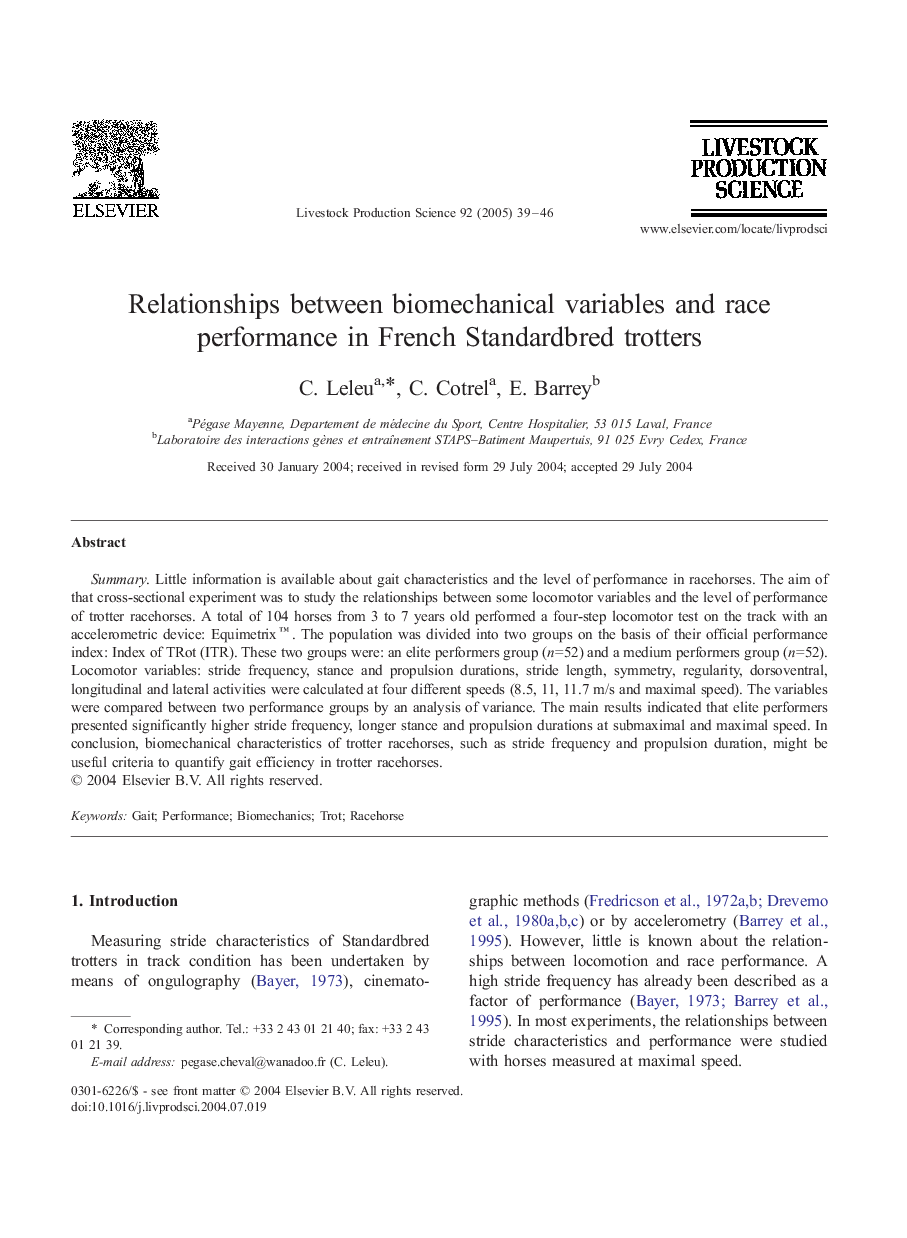| Article ID | Journal | Published Year | Pages | File Type |
|---|---|---|---|---|
| 8982800 | Livestock Production Science | 2005 | 8 Pages |
Abstract
Little information is available about gait characteristics and the level of performance in racehorses. The aim of that cross-sectional experiment was to study the relationships between some locomotor variables and the level of performance of trotter racehorses. A total of 104 horses from 3 to 7 years old performed a four-step locomotor test on the track with an accelerometric device: Equimetrixâ¢. The population was divided into two groups on the basis of their official performance index: Index of TRot (ITR). These two groups were: an elite performers group (n=52) and a medium performers group (n=52). Locomotor variables: stride frequency, stance and propulsion durations, stride length, symmetry, regularity, dorsoventral, longitudinal and lateral activities were calculated at four different speeds (8.5, 11, 11.7 m/s and maximal speed). The variables were compared between two performance groups by an analysis of variance. The main results indicated that elite performers presented significantly higher stride frequency, longer stance and propulsion durations at submaximal and maximal speed. In conclusion, biomechanical characteristics of trotter racehorses, such as stride frequency and propulsion duration, might be useful criteria to quantify gait efficiency in trotter racehorses.
Related Topics
Life Sciences
Agricultural and Biological Sciences
Animal Science and Zoology
Authors
C. Leleu, C. Cotrel, E. Barrey,
